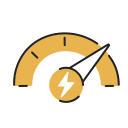Building a Successful Remote Work Routine
Creating a successful remote work routine involves more than simply working from home. It encompasses establishing boundaries, setting clear goals, finding effective communication methods, and taking care of your well-being. Mastering this routine is crucial for maximizing productivity, maintaining a work-life balance, and ensuring long-term career growth. With a structured approach, you can transform remote work challenges into opportunities for greater autonomy and efficiency.

Designing Your Remote Workspace
Creating a Dedicated Work Area
Establishing a designated area for work within your home can make a significant difference in how you experience remote work. Even if space is limited, choosing a specific spot to set up your workstation helps separate your personal life from your professional obligations. This physical boundary signals to your brain that it is time to focus, helps you limit distractions, and makes it easier to mentally “leave” work at the end of the day.
Ensuring Ergonomics and Comfort
Comfort and ergonomics are critical for long-term health and productivity. Invest in an ergonomic chair and an appropriate desk arrangement to avoid posture-related issues and fatigue. Consider proper lighting to reduce eye strain and keep essential items within easy reach to enable uninterrupted workflows. An ergonomic setup not only minimizes the risk of physical discomfort but also contributes to mental clarity by providing a stable and supportive environment.
Minimizing Distractions
Your workspace should be as free from distractions as possible. This may involve noise-canceling headphones, informing household members of your working hours, or utilizing tools that help you focus. Reducing interruptions helps you protect blocks of deep work time, increase efficiency, and maintain a sense of professional independence. By auditing and optimizing your environment, you lay the foundation for consistent and high-quality work output.

Leveraging the Right Communication Tools
The choice of communication tools can make or break remote team dynamics. Utilize a mix of synchronous and asynchronous platforms—such as video calls, messaging apps, and project management systems—to facilitate structured updates as well as quick interactions. Understanding the strengths and limitations of each tool helps you convey ideas efficiently and ensures that everyone stays informed and engaged.
Practicing Clarity and Consistency
Clear and consistent communication is vital when working remotely. Take the time to articulate your messages thoughtfully, confirm understanding, and provide regular updates on your progress. Written communication should be concise yet comprehensive, anticipating questions or concerns ahead of time. Being consistent in your communication patterns helps build reliability and trust within your team.
